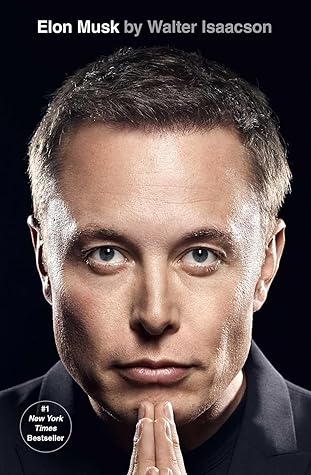More on this book
Community
Kindle Notes & Highlights
He learned one very big lesson from these ventures: “It’s not the product that leads to success. It’s the ability to make the product efficiently. It’s about building the machine that builds the machine. In other words, how do you design the factory?” It was a guiding principle that Musk would make his own.
“Step one should be to question the requirements,” he says. “Make them less wrong and dumb, because all requirements are somewhat wrong and dumb. And then delete, delete, delete.”
Always wait until the end of designing a process—after you have questioned all the requirements and deleted unnecessary parts—before you introduce automation.
All bad news should be given loudly and often. Good news can be said quietly and once.”
Musk was more sanguine and polite. He valued his friendship with Emanuel. “Look, I appreciate the offer,” he said. “But Twitter is a tech company, a programming company.” Emanuel countered that they could just hire the tech people, but Musk gave him a firm no. He had a core belief that you could not separate engineering from product design. In fact, product design should be driven by engineers. The company, like Tesla and SpaceX, should be engineering-led at all levels.
Musk let loose a bitter laugh when he heard the phrase “psychological safety.” It made him recoil. He considered it to be the enemy of urgency, progress, orbital velocity. His preferred buzzword was “hardcore.” Discomfort, he believed, was a good thing. It was a weapon against the scourge of complacency. Vacations, flower-smelling, work-life balance, and days of “mental rest” were not his thing.
“Twitter now has twenty-five hundred software engineers,” Musk told them. “If each wrote only three lines of code per day, a ridiculously low bar, that should make three million lines a year, which is enough for a whole operating system. This is not happening. Something is deeply amiss. I feel like I’m in a comedy show here.” “Product managers who don’t know anything about coding keep ordering up features they don’t know how to create,” James said. “Like cavalry generals who don’t know how to ride a horse.” It was a line Musk himself often used.
His new policy was partly motivated by his belief that being together in an office facilitated the flow of ideas and energy. “People are way more productive when they’re in person because the communication is much better,”
Afterward, he met with a dozen young coders who had been chosen by Ross and James for their excellence. It relaxed him to be talking about engineering, and he drilled down with them on issues such as ways to make video uploads easier. In the future, he told them, the teams at Twitter would be led by engineers like themselves rather than designers and product managers. It was a subtle shift. It reflected his belief that Twitter should be, at its core, a software engineering company, led by people with a feel for coding, rather than a media and consumer-product company, led by people with a feel
...more
It was not always a pretty sight. Musk’s method, as it had been since the Falcon 1 rocket, was to iterate fast, take risks, be brutal, accept some flameouts, then try again. “We were changing the engines while the plane was spiraling out of control,” he says of Twitter. “It’s a miracle we survived.”


